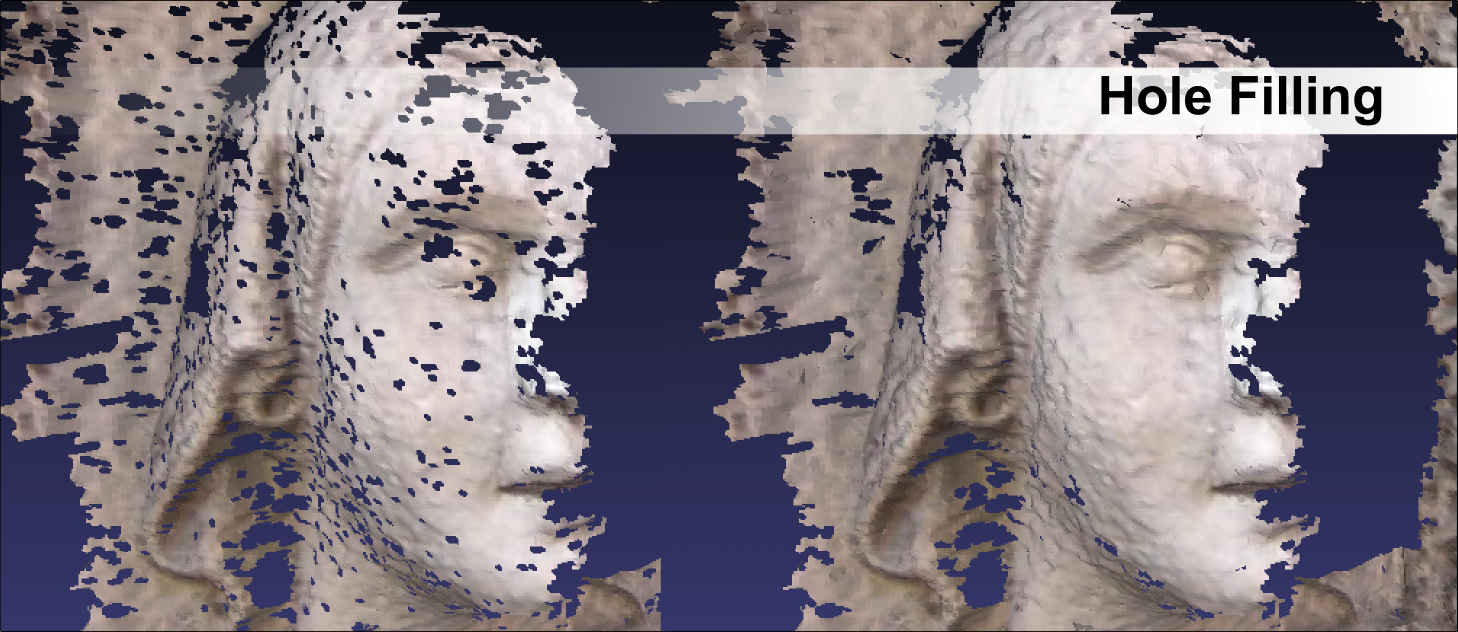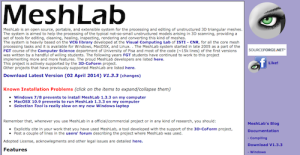

In addition to that, it features a variety of other very useful tools, such as a set of 3D acquisition tools, which make it possible to accomplish error-free processing of 3D scanned data, or its conversion and interchange tools to export a number of different 3D data formats. MeshLab has, for example, an integrated 3D modeling program, as well as colorization and inspection filters. Besides that, users can benefit from all kinds of addons and functions, which can come in handy, especially for those who don’t want to have to use a number of different programs for the 3D printing preparation. After that, you are presented with the 3D version of the STL, and from there, you can work yourself through the repair menu, where you can choose a number of repair options. It is a very convenient system how it creates the script for you - but I.
USING MESHLAB SOFTWARE
As with any software application, there are a few items to keep in mind: Learning Curve Any application will have some learning curve and mastering even simple applications can take some time.

After opening the program, you simply need to import the file you want to repair into the program, either by drag-and-drop or by selecting it manually. I was trying to use incorporate meshlab scripting into some brain mesh processing. MeshLab is a very powerful application that can and should be used as a standalone application when working with mesh type files (see Why use MeshLab ).

Although the program features a variety of functions that need to be explored in a lot more detail, the most commonly used function is its ability to repair STL files in a quick and easy way.
USING MESHLAB HOW TO
MeshLab can do more than just repair (photo credits: Meshlab) How to Use MeshLabĪs already mentioned earlier, the open-source software is free and can be downloaded and installed right away, with versions available for Windows, MacOSX, and Linux. Working towards those goals in the following years, the students implemented more and more features, until the effort finally resulted in the program now known as MeshLab. use Mesh Cleaner, a tool which runs MeshLab internally for this purpose.
USING MESHLAB PROFESSIONAL
When developing the software, the team focused on creating an easy-to-use program for professional tasks, which would enable efficient production and help guarantee more sustainability by promoting the use of additive manufacturing. it is shown how to obtain inertial data using the free software MeshLab. Later on, the mesh processing system got further developed in a team effort involving the Visual Computing Lab of the ISTI-CNR and the help of many students. The program was originally designed as a course assignment at the University of Pisa in late 2005. You can list all the available filters and theirs parameters: It will list the filters (with a link to their documentation) that. See the documentation of the MeshSet class for more details. It represents the current state of MeshLab (containing a set of meshes, rasters). The free and open-source 3D mesh processing software provides users with a set of tools for a variety of assignments, ranging from cleaning and repairing all the way to editing and converting all kinds of 3D meshes. The main class of PyMeshLab is the MeshSet class. One of the most promising software for that is MeshLab. To save oneself a great amount of frustration resulting from that unfortunate situation, there is software available that has been created for the purpose of repairing STL files in just a few clicks. When everything seems fine and you’re about to get started, the system shows an error and the STL file isn’t working. You’re excited to print the object of your choice after selecting a suitable STL file, which you’ve either made yourself or found on one of the websites offering countless examples created by others. Those of you who ever took to the task of 3D printing their own project might have come across a particular dilemma. I followed a tutorial using Meshlab and then Blender to create some basic voronoi and other visual effects on solid objects, in this case a simple sphere.


 0 kommentar(er)
0 kommentar(er)
